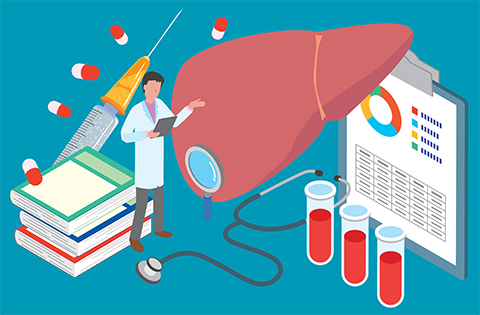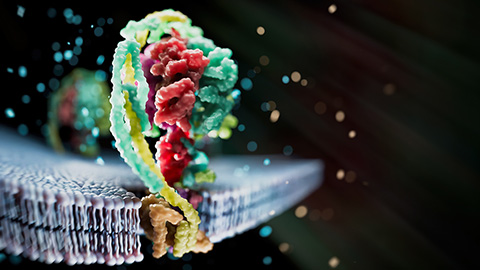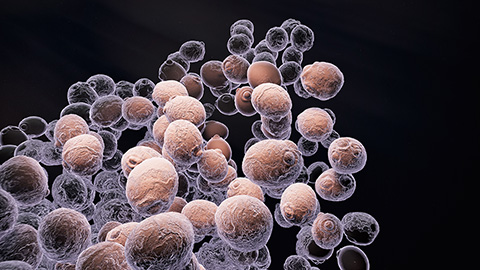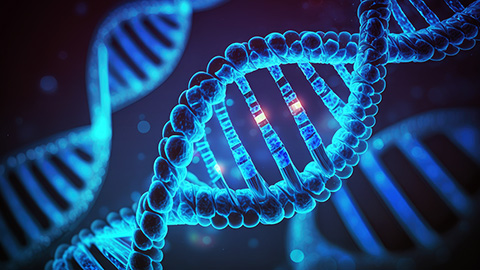Understanding the fat science
Fat cells play a vital role in the storage and release of energy throughout the human body. When we are fasting, exercising or exposed to cold, our white adipose tissue, or WAT, generates energy through lipolysis, a process that breaks down lipids.
When lipids from WAT mobilize to the liver, triglycerides can accumulate, an underlying cause of nonalcoholic fatty liver disease, or NAFLD — a disease that affects about 100 million people in the U.S. and about 25% of the world's population.
The key questions are: How do the fatty acids released from WAT contribute to the liver lipid pool? And do exogenous fatty acids affect the liver?

Researchers at the University of California, Los Angeles, set out to understand lipid remodeling in the liver. The team led by Claudio Villanueva developed a targeted quantitative liquid chromatography–mass spectrometry method to study time-dependent changes in serum and liver lipids in response to lipolysis. Their study was published in the Journal of Lipid Research.
“Our research highlights what are some of the lipids that are released by fat cells, in conditions such as fasting,” Villanueva said. “Fasting activates lipolysis, a process in which lipids are broken down into free fatty acids, which get mobilized to the liver through the bloodstream. The liver changes the amount of lipids based on what the fat cell is releasing, resulting in the accumulation of triacylglycerol or triglycerides. Accumulation of triglycerides leads to conditions like NAFLD.”
Researchers don’t completely understand the specific contribution of adipose-derived fatty acids to liver lipidome, but studies suggest these make up 70% of the triglyceride pool in the human liver. The method developed by the authors monitors serum and liver lipid levels after stimulating adipocyte lipolysis. To identify the different lipid species, the team collaborated with UCLA Lipidomics Core.
They demonstrated that the lipids from adipose tissue, directly and indirectly, remodel the liver lipids, which helped them understand lipid signaling. Lipid signaling drives regulation of lipid metabolism in the liver and the genes involved in lipid remodeling.
“We show how dynamic changes in fatty acids impact other lipid classes like ceramides and a variety of phospholipid species,” Villanueva said. “And using mice lacking adipose triglyceride lipase allowed us to examine how signals from adipose tissue impact lipid remodeling in the liver.”
Activation of adipocyte lipolysis led to a dramatic rise in serum lipids, mostly fatty acids, and ceramide species. Further, triglyceride pool in serum and liver analysis showed that linoleate is abundant. Linoleic acid is an essential polyunsaturated fatty acid that is a precursor for prostaglandins, leukotrienes and thromboxane. The results suggest that hepatocytes spare the use of linoleic acid for synthesis of these potent signaling molecules and store linoleic acid in molecular species such as triglycerides. preventing it from being used for fatty acid oxidation.
“This remodeling of the liver is a mechanism of providing energy for the body,” Villanueva said. “We have a ton of energy stored in our fat cells, and we need to move that energy to the liver so that the liver can metabolize it. The liver generates metabolites like ketone bodies, used by the brain to fuel neuronal function. The liver plays an important role when we go from feeding to the fasting state because it breaks down fats and provides fuel for the brain.”
Moving forward, the research team aims to understand what drives the transcriptional changes in the liver after activation of lipolysis in the fat cell.
Enjoy reading ASBMB Today?
Become a member to receive the print edition four times a year and the digital edition monthly.
Learn moreGet the latest from ASBMB Today
Enter your email address, and we’ll send you a weekly email with recent articles, interviews and more.
Latest in Science
Science highlights or most popular articles

Cholesterol as a novel biomarker for Fragile X syndrome
Researchers in Quebec identified lower levels of a brain cholesterol metabolite, 24-hydroxycholesterol, in patients with fragile X syndrome, a finding that could provide a simple blood-based biomarker for understanding and managing the condition.

How lipid metabolism shapes sperm development
Researchers at Hokkaido University identify the enzyme behind a key lipid in sperm development. The findings reveal how seminolipids shape sperm formation and may inform future diagnostics and treatments for male infertility.

Mass spec method captures proteins in native membranes
Yale scientists developed a mass spec protocol that keeps proteins in their native environment, detects intact protein complexes and tracks drug binding, offering a clearer view of membrane biology.

Laser-assisted cryoEM method preserves protein structure
University of Wisconsin–Madison researchers devised a method that prevents protein compaction during cryoEM prep, restoring natural structure for mass spec studies. The approach could expand high-resolution imaging to more complex protein systems.

Method sharpens proteome-wide view of structural changes
Researchers developed a method that improves limited proteolysis coupled with mass spectrometry, separating true changes from abundance or splicing effects.

Discoveries made possible by DNA
The discovery of DNA’s double helix revealed how genetic information is stored, copied and expressed. Revisit that breakthrough and traces how it laid the foundation for modern molecular biology, genomics and biotechnology.

